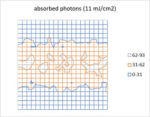The topics of stochastics and blur in EUV lithography has been examined by myself for quite some time now [1,2], but I am happy to see that others are pursuing this direction seriously as well [3]. As advanced node half-pitch dimensions approach 10 nm and smaller, the size of molecules in the resist become impossible to ignore for … Read More
Tag: euv lithography
A Perfect Storm for EUV Lithography
Electron blur, stochastics, and now polarization, are all becoming stronger influences in EUV lithography as pitch continues to shrink
As EUV lithography continues to evolve, targeting smaller and smaller pitches, new physical limitations continue to emerge as formidable obstacles. While stochastic effects have long been… Read More
CEO Interview with Jonas Sundqvist of AlixLabs
Jonas Sundqvist received his PhD in inorganic chemistry from Uppsala University, Department for Materials Chemistry at The Ångström Laboratory in 2003 where he developed ALD and CVD processes for metal oxide ALD and CVD processes using metal iodides. Jonas is in charge of the daily business at AlixLabs – as a co-founder, he’s… Read More
CEO Interview with Dinesh Bettadapur of Irresistible Materials
Dinesh Bettadapur serves as the Chief Executive Officer of Irresistible Materials Ltd. Dinesh has over 20 years of executive management experience in the semiconductor industries and has held significant leadership roles encompassing general management, P&L management, sales, business development, strategic alliances,… Read More
Resist Loss Model for the EUV Stochastic Defectivity Cliffs
The occurrences of notorious stochastic defects in EUV lithography have resulted in CD or corresponding dose windows with the lower and higher bounds being characterized as “cliffs” [1-3], since the defect density increases exponentially when approaching these bounds. The defects at lower doses have been attributed to the… Read More
Stochastic Effects Blur the Resolution Limit of EUV Lithography
Conventionally, the resolution limit of a lithography system with wavelength l and numerical aperture NA is given by half-pitch = 0.25 wavelength/NA. With the use of EUV lithography, however, electron blur needs to be added [1]. The impact of this blur is to reduce the contrast [2]. Blur reduces the modulation amplitude by a factor… Read More
Stochastic Pupil Fill in EUV Lithography
Pupil fill tradeoff again
EUV lithography continues to be plagued by its stochastic nature.
This stochastic nature is most clearly portrayed by the random fluctuation of the absorbed photon number at a given location. For example, consider an absorbed dose of 10 mJ/cm2 amounts to 6.8 photons of energy 92 eV absorbed in a square … Read More
Why NA is Not Relevant to Resolution in EUV Lithography
The latest significant development in EUV lithography technology is the arrival of High-NA systems. Theoretically, by increasing the numerical aperture, or NA, from 0.33 to 0.55, the absolute minimum half-pitch is reduced by 40%, from 10 nm to 6 nm. However, for EUV systems, we need to recognize that the EUV light (consisting … Read More
Non-EUV Exposures in EUV Lithography Systems Provide the Floor for Stochastic Defects in EUV Lithography
EUV lithography is a complicated process with many factors affecting the production of the final image. The EUV light itself doesn’t directly generate the images, but acts through secondary electrons which are released as a result of ionization by incoming EUV photons. Consequently, we need to be aware of the fluctuations… Read More
Predicting Stochastic Defectivity from Intel’s EUV Resist Electron Scattering Model
The release and scattering of photoelectrons and secondary electrons in EUV resists has often been glossed over in most studies in EUV lithography, despite being a fundamental factor in the image formation. Fortunately, Intel has provided us with a laboriously simulated electron release and scattering model, using the GEANT4… Read More










